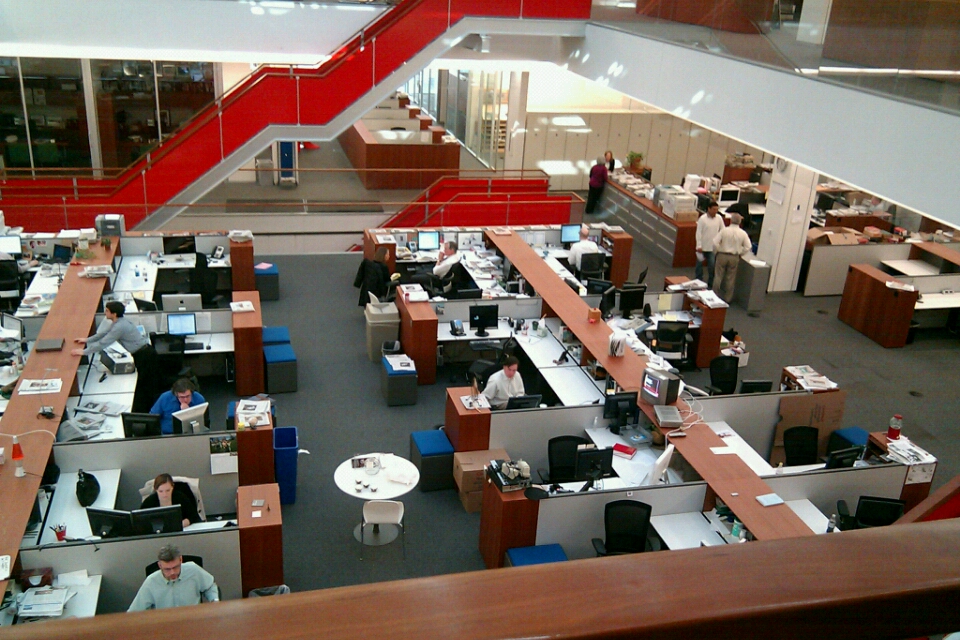There’s been a lot of talk in the media business about concept of an “open newsroom,” one in which readers and regular citizens help traditional journalists in the news-gathering process, but with a few exceptions — including the Guardian and ProPublica — examples of such a thing in action have been relatively rare. One of the few companies trying to pursue the idea across a number of platforms is Storyful.com, the social-media-based news service, which launched its Open Newsroom project several months ago.
Open Newsroom consists of a Google+ page with a relatively small membership — about 200 at the moment — made up of users who have volunteered to help verify photos, videos and other content that comes in through social media channels like Twitter, Facebook, YouTube and Flickr. Storyful managing editor Markham Nolan says the company deliberately limited the number of members to try and keep down the noise within the group. As the description says:
We are operating an open newsroom, available to journalists and experts who share our aims. This will be a real-time community of news professionals working together to establish the maximum clarity and context around the big stories of the day. Our objective is to debunk, fact-check, clarify, credit and source. It is a work in progress.
Storyful’s main line of work is identifying and verifying news-related photos and video for a roster of media clients, including major players like ABC News and Bloomberg. The company has also branched out into representing the producers of that user-generated content in their negotiations with media companies to license their photos and video, and founder Mark Little has also lobbied for a “public license” that would provide credit for such citizen journalists.
Even before it launched the Open Newsroom, the company had been expanding the way it verifies social-media content to take advantage of the abilities of the crowd: it used to have a private Twitter account called Storyful Pro where it collected and distributed much of its verified content, but last fall Little decided to open up that process and make the account public, because he said that he believed crowdsourcing was the best way to approach that kind of verification.
The Google+ newsroom isn’t terribly complicated — it is simply a group that focuses on photos or video that have come from a social-media source, such as videos of a rocket attack in Syria, and tries to crowdsource as much information about them as possible. Nolan told Journalism.co.uk that the group has already been fairly successful in a number of cases, including doing some real-time verification of videos that were coming from Egypt recently:
Pulling in people with local knowledge, and some good independent journalists, we were able to pool skills in the Open Newsroom and get to the bottom of the situation… Using a second video, and input from two other collaborators who had further contacts on the ground, this dramatic piece of footage was verified as close as is possible without physically accompanying the cameraman onto the street.
In one recent incident, the Storyful newsroom even got a submission from Brown Moses, the pseudonymous British blogger who has become something of a celebrity within social-media-powered news circles for his skill in verifying information about weapons in Syria — a skill he has developed more or less on his own by watching thousands of YouTube videos and checking public databases of information about military weaponry.
What Brown Moses has shown by developing that kind of expertise — expertise that has been celebrated by professional journalists like New York Times reporter C.J. Chivers, a former Marine — is that citizen journalists or even just intelligent bystanders can contribute to the reporting around a conflict like Syria, and that’s what Storyful’s open newsroom idea is based on. It’s like a crowdsourced version of the BBC’s “user-generated content” desk, which does exactly the same thing inside the British broadcaster’s newsroom.
Many media organizations are happy to take photos and video from social-media sources and use them in their reporting, but few are using the features of those massive distributed platforms to actually verify that content or to put it in context — or to give credit to those who produced it. At least Storyful and a few others are showing what is possible when we stop thinking of a newsroom a specific place and start thinking of it as an open process.
Via: GigaOm
Image Credit: Igor Schwarzmann












